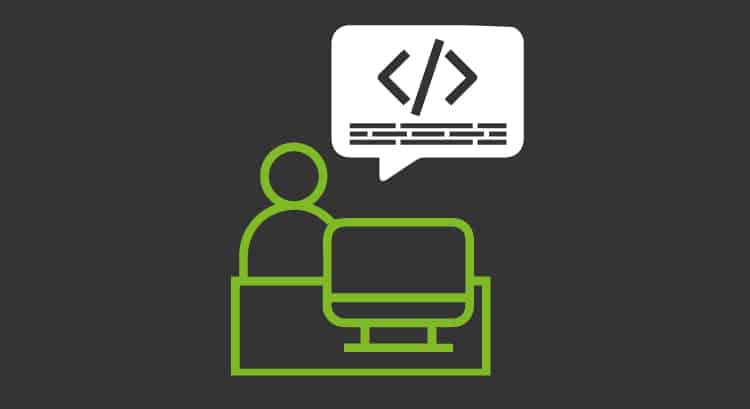What are the next challenges for IT monitoring?
“The big challenge is to become all you could possibly be”, Jim Rohn. “The only way to grow is to challenge yourself,” Ashley Tisdale. “The bigger the obstacle, the more glory there is in overcoming it”, Molière… And so we could continue with a long list of inspiring and fighting-spirited people who faced life and came out victorious (probably).
Pandora FMS is the same. Unbreakable and litigant. Pugilist of inconveniences and pole vaulter of “insurmountable” problems. But of course, regarding problems related to IT monitoring. These problems assail us day by day, but we are still here, resisting, clinging to the foremast while the waves hit us, the smell of the bilge rises and the keel pierces against the rocks. No one can stop us.
Today we will ask some of our team members about the challenges of IT monitoring.
Sancho Lerena, CEO of Pandora FMS
What are the biggest challenges that IT monitoring faces or will face?
Hybrid environments no doubt. Before, everything was simpler, you had your devices, but now there aren’t even infrastructures as such. Sometimes they are cloud services, servers hosted elsewhere, your own geographically distributed offices, large clouds in Amazon, Azure and Google, mobile devices… Being able to coordinate all that infrastructure in a single point is not easy. Doing it without resorting to many staff resources is even more difficult.
What are the ways you would face these challenges and what are your possible solutions?
There is a lot of talk about artificial intelligence. I believe that we must talk about increased intelligence, enhancing the work of IT technicians with agile tools that make their task as easy as possible. AI can be applied to certain specific aspects, but the most complex thing is to adapt to the changing reality and for that, tools designed to adapt to changes are needed. Flexible and fast-evolving tools, just like in real life.
Borja Sánchez, Head of the Department of Innovation
What are the biggest challenges that IT monitoring faces or will face?
The volume of devices and technologies to be monitored every day is increasingly higher. Environments with more than a million metrics are not as difficult to find as before, for example. But the biggest problem is not so much retrieving information but displaying said data: How to distinguish relevant data from non-relevant?
What are the ways you would face these challenges and what are your possible solutions?
The correlation of information from different sources allows you to find problems by “mixing” the information that the agents retrieve. So, for example, a slow response on a couple of servers, an incorrect access attempt on another, along with abnormal CPU usage activity, could be pointing to an intrusion attempt. We do this right now with the correlated alert system, although there is still a lot of work left to do.
Ramón Novoa, Head of the AI department
What are the biggest challenges that IT monitoring faces or will face?
The volume of data we generate keeps on growing. It is estimated that by 2025 we will reach 463 exabytes per day, a difficult figure to put into perspective, equivalent to more than 200 million DVDs. And this trend is expected to only increase with the arrival of the Internet of Things (IoT).
What are the ways you would face these challenges and what are your possible solutions?
To be able to process and analyze such amounts of data, you will have to rely more and more on algorithms that help us find patterns and anomalies. That is why Ártica ST (developer of Pandora FMS) invests in technologies such as artificial intelligence, thinking about the future.
Rafa Ameijeiras, Project Manager
What are the biggest challenges that IT monitoring faces or will face?
IT is constantly changing, but in the past few years these changes have been exponential and very radical. Now we have cloud, microservices, orchestrators, serverless, managed services (SaaS), managed platforms (PaaS) and thousands of new technologies that do not behave the same way that environments did a few years ago and that cannot be monitored the same way.
Almost recently most applications were monolithic and the concept of monitoring was finding out whether a machine was “alive” and connected to the network, and that was it. And as additional information, finding out the performance of the machines (CPU, Memory, Disk, network use, process and service status). This was considered full monitoring.
Today those values are still useful, of course, but insufficient. Most of the machines we use are not ours, we hire them as a service. Even many times we can’t even know what machine our applications and services are running on. Applications are no longer monolithic, they are not on a single server, so they can be spread over dozens of servers, or even hundreds of containers or serverless services around the world.
Knowing how these new technologies work and how they switch with the “classic” technology we know, in order to offer high quality monitoring is, in my opinion, the biggest challenge we face.
What are the ways you would face these challenges and what are your possible solutions?
Constant training, keeping up to date with what is happening in IT, knowing which services are the most used today and spending time studying and understanding them in order to integrate them into monitoring.
Although it seems very complex, we also have help. More and more, it comes from software manufacturers and service providers, and even from many hardware manufacturers. They are more aware of the monitoring needs and the paradigm shift, and they put at our disposal different communication mechanisms with their tools to obtain the necessary information on their status and performance.
It is in our hands to take advantage of these resources and get the best performance from them, to be able to correlate the data that are relevant and discard those that are not, in order to be able to represent the status of the monitored applications and services in a reliable way.

Dimas P.L., de la lejana y exótica Vega Baja, CasiMurcia, periodista, redactor, taumaturgo del contenido y campeón de espantar palomas en los parques. Actualmente resido en Madrid donde trabajo como paladín de la comunicación en Pandora FMS y periodista freelance cultural en cualquier medio que se ofrezca. También me vuelvo loco escribiendo y recitando por los círculos poéticos más profundos y oscuros de la ciudad.
Dimas P.L., from the distant and exotic Vega Baja, CasiMurcia, journalist, editor, thaumaturgist of content and champion of scaring pigeons in parks. I currently live in Madrid where I work as a communication champion in Pandora FMS and as a freelance cultural journalist in any media offered. I also go crazy writing and reciting in the deepest and darkest poetic circles of the city.
















